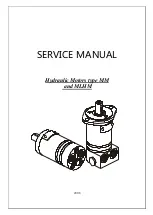
Fuel and pressure lines
Connect suitable lengths of silicone tubing, as
illustrated, after installing the engine.
Silicone tubing
Use knife or razor blade.
Do not use wire
cutters or pliers
Note: When cutting silicone tubing......
*If you should need to clean out silicone tubes, use methanol
or glow-fuel, not gasoline.
6
~
8mm
Plumbing and position of fuel tank
Fuel level
Pay attention to tank height
Locate the fuel tank so that the top of the tank is 5-
10mm (1/4-3/8") above the level of the needle-valve.
Silencer (muffler) pressurized fuel system
To reduce variation in fuel "head" and ensure steady
fuel delivery at the carburettor, it is advisable to employ
a silencer (muffler) pressurized fuel system, i.e. to use
the silencer outlet nipple to pressurize the fuel tank as
shown left.
Fuel
Use a good quality commercial fuel or one of the blends
shown in the table. Fuel "A" is suitable for running-in and
ordinary use. Fuel "B" is for use when more power is required
and for improved flexibility. Note that even a small quantity
of nitromethane (3-5%) will improve flexibility, making the
needle-valve adjustment less critical and improving throttle
response. Use only materials of the highest purity. Synthetic
oils are permissible but are less tolerant of a "lean run" than
castor-oil. If, therefore, a synthetic lubricant is used in the
fuel, readjust the needle-valve to a slightly richer setting, as
a safety measure, in case the fuel/air mixture becomes too
lean through maneuvers in flight. If a higher nitro fuel is used,
the engine should be checked out to make sure that it is
sufficiently run-in to operate on that particular fuel without
overheating. Do not use fuels containing less than 18%
lubricant.
ADVICE ON SELECTION OF FUEL, GLOWPLUG & PROPELLER
12














































